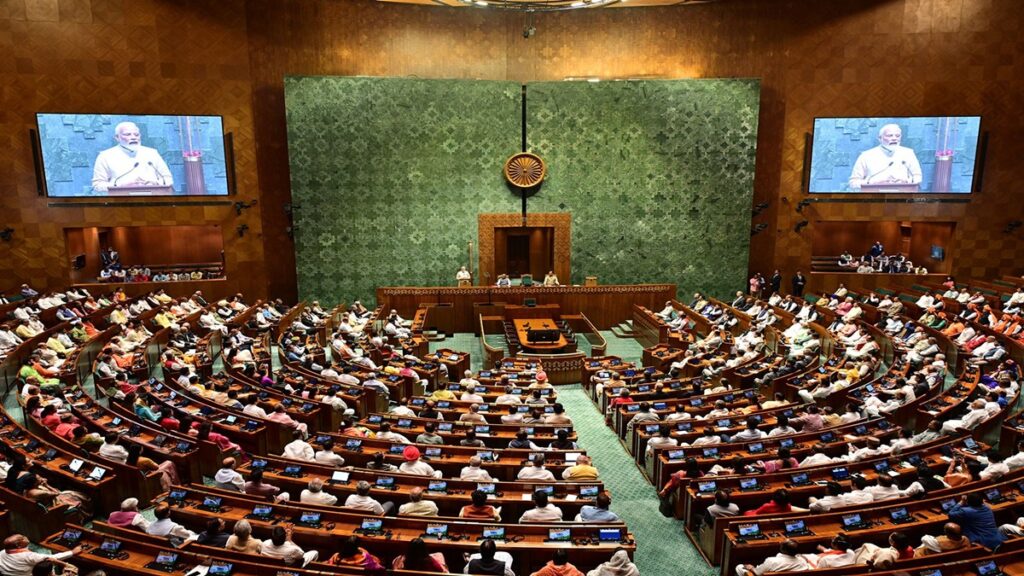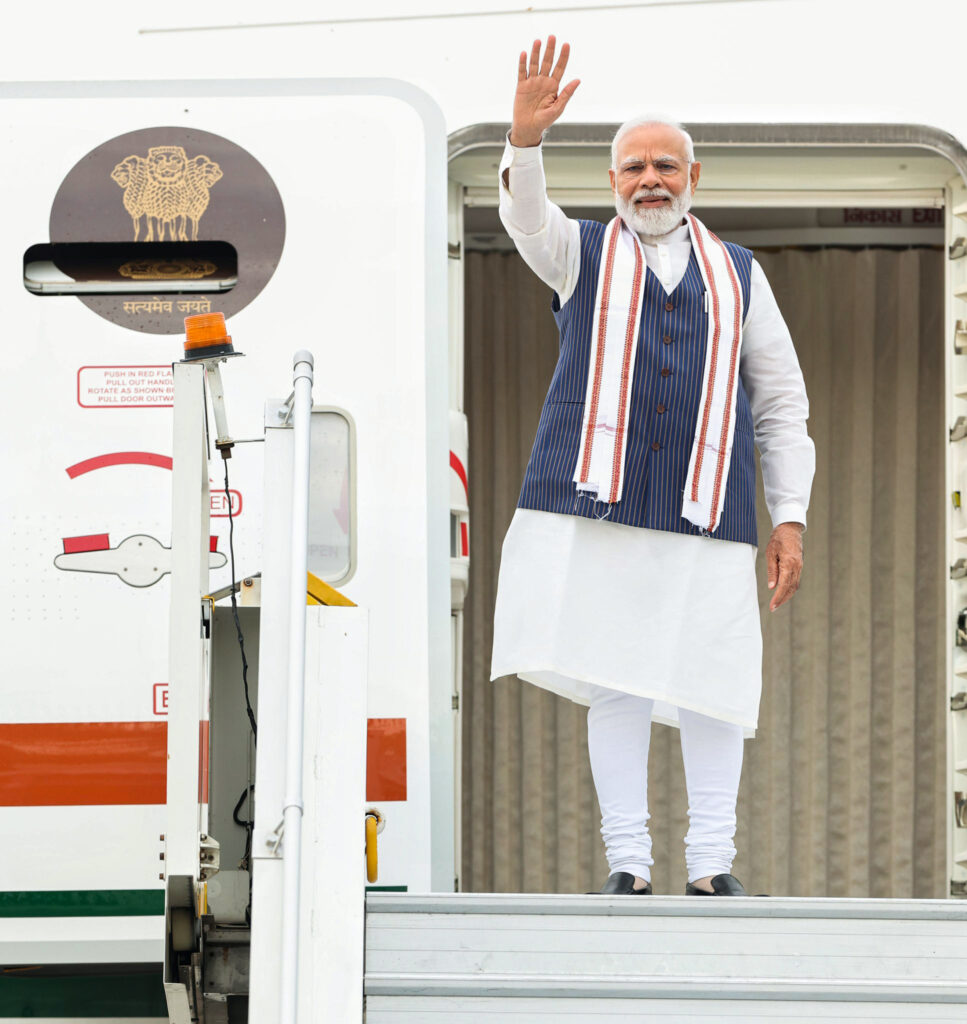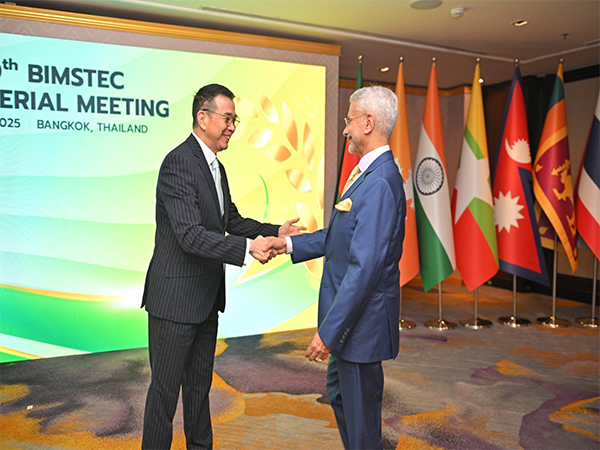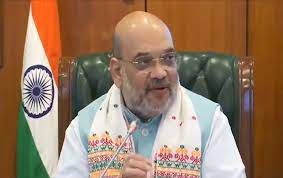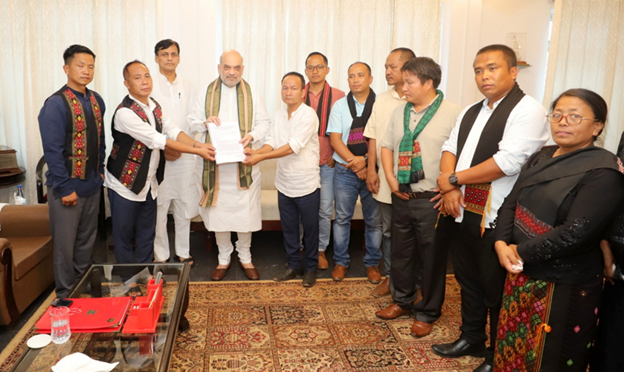MHA holds high-level meeting on security for Amarnath Yatra, Mandaviya reviewed health services
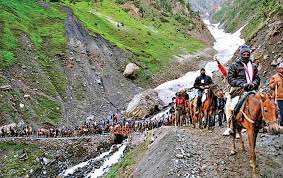
The Ministry of Home Affairs (MHA) has intervened to guarantee flawless coordination between security agencies with less than a week left before the first group of yatris visit the Amarnath cave. In the meantime, union Health Minister Mansukh Mandaviya reviewed health services and facilities for Amarnath Yatra devotees with senior health ministry and Directorate General of Health Services (DGHS) officials on June 27, reported HS.
Ajay Bhalla, the union Home Secretary, presided over a meeting on Tuesday with representatives from the MHA, Jammu and Kashmir (JandK) police and paramilitary organizations. From July 1 to August 31, nearly five lakh people are anticipated to participate in the yatra.
The meeting was necessary to ensure better coordination between various agencies because the deployment pattern of paramilitary forces has changed from past. Tuesday’s meeting followed a review of Amarnath Yatra preparations with all stakeholders by Home Minister Amit Shah.
The Indo-Tibetan Border Police (ITBP), which has traditionally guarded the Amarnath cave, has taken the place of the Central Reserve Police Force (CRPF) this year. While the CRPF will be in charge of guarding the approach to the stairs and ITBP personnel will be in charge of guarding the cave and its stairs. Along the pilgrims’ route between Chandanwari and Pahalgam, the Border Security Force (BSF), ITBP, CRPF, Indian Army, and J&K police will be present. However, the ITBP and BSF have been given six positions that the CRPF had previously guarded.
According to an MHA officer, “The paramilitary personnel from different forces have been assigned roles different from the previous years, so the MHA called for a meeting to ensure everyone worked cooperatively and was on the same page as far as the standard operating procedures are concerned.”
After the CRPF was heavily deployed in Manipur and for the Bengal panchayat elections, the J&K Police proposed dividing up the roles between the CRPF, ITBP, and BSF. Threats from terrorist organizations in Jammu and the Kashmir Valley have been flagged by intelligence agencies.
Convoys carrying Amarnath yatris will depart from Jammu and travel to Pahalgam or Baltal. The response SOP in the event of a hybrid terror attack using small arms, sticky bombs, or attempts at sabotage at the camps where yatris will break their journey was covered in the security review, according to officials, reported HS.
Buses have received radio frequency tags, and yatris will also receive RFID badges prior to their trek, maintaining the systems from previous years. To check for security threats, numerous frisking and baggage checkpoints have been set up at Noonwan, Pehelgam, and Baltal.
About 400 satellite phones, anti-drone technology, bomb disposal teams, and dog squads, according to officials, will be in place to ensure a smooth yatra. In addition to paramilitary forces, the yatra deployment will include representatives from mountain rescue teams, the National Disaster Response Force, and the National Disaster Management Authority.
In the meantime, union Health Minister Mansukh Mandaviya reviewed health services and facilities for Amarnath Yatra devotees. The minister received a briefing on the Yatra’s amenities and medical care. In order to ensure that pilgrims receive the necessary health services for the arduous journey, he gave officials instructions to assist the Jammu and Kashmir administration.
Due to its high altitude, the Amarnath Yatra poses special geoclimatic difficulties. In accordance with the union Health Minister’s instructions, the Ministry of Health is assisting the Government of Jammu and Kashmir in setting up medical services for the pilgrimage.
This coordinated effort aims to improve and account for the required health requirements for the journey. The union Health Ministry has set up medical facilities at base camp and on the way with the necessary infrastructure.
The establishment of two 100-bed hospitals by DRDO along the operationalized axis routes of Baltal and Chandanwari was fully funded and supported by the ministry of health, according to an official statement.
These hospitals will have accommodations for the staff members who were sent on the yatra. These hospitals would be equipped with all diagnostic and therapeutic tools, such as labs, radiology, gynecological, intensive care units, and hyperbaric oxygen rooms.
These hospitals would be open twenty-four hours a day, staffed by specialists, and equipped with a separate trauma unit. In four batches, DGHS is sending medical personnel to the Amarnath Yatra from 11 states/UTs and central government hospitals.
Additionally, the ministry helps doctors and paramedics develop their skills in managing high-altitude sickness. The Emergency Medical Relief division is evaluating the readiness on-site at medical facilities and makeshift hospitals.
For the Amarnath Yatra, a specially designed real-time data collection module is being created. This module, which is a part of the National Center for Disease Control’s IHIP portal, aims to improve emergency preparedness and collect data on disease trends and healthcare-related problems.
During the Amarnath Yatra, the Health Ministry has created SOPs for the medical management of high-altitude emergencies as well as advisories for pilgrims.
The upcoming Amaranth Yatra beginning July 1, has greater significance as there are two ‘Shravan’ months this year, an extraordinary astronomical event taking place after 19 years, custodian of the holy mace of Lord Shiva or the Chhari Mubarak, Mahant Deependra Giri said here on Tuesday.
This year, the month of ‘Shravan’, also known as ‘Sravana’ or ‘Sawan’, will start on July 4 and will continue till August 31. It will be 59 days long, and there will be eight ‘Sawan’ Mondays or ‘Somwars’ instead of the usual four every year.



